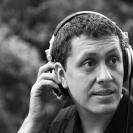Search the Community
Showing results for tags 'technology'.
-
YouTube has a fascinating piece about a new virtual set technology demoed at Siggraf. Actors work in front of a high res, large LCD like an old-fashioned rear projection... But instead of projecting a pre-shot still or moving plate, the system renders in real time... with real perspective, based on the lens and camera position! Move the camera, and elements on the plate shuffle around with it to keep the background realistic from the camera's POV. Meanwhile, the actors get more of a sense of working in an environment, rather than against a screen. On top of that, the director can sit at a laptop with virtual viewfinders, exploring the look of any kind of lens from anywhere in the shooting area. And the art director can move individual elements, such as shifting a car to the other side of the street if it looks better... As I understand it - and I'm not a vfx guy - the system can respond to only one camera position at a time. (Shades of the "tech snafu" pinch in Mission Impossible: Ghost Protocol.) So the director can't use two cameras. And, hopefully, you can get a boom in there. Prediction: this will get cheaper, stop being a 'special effect', and because of lower cost will replace a lot of location work. Other prediction: they'll come up with some way to code multiple images for two or three cameras - maybe using polarization - and we'll be back where we started with tight and wide.
-
NPR has a story about Mosquito, a high frequency outdoor generator being used by some 30 cities to discourage teenagers from staying in parks at night. According to the manufacturer's website, Mosquito generates an 18 kHz signal -- at that frequency, presumably a sine (because where would the harmonics live?) -- with an AGC to keep it 5 dB above ambient. No indication whether their AGC looks at broadband or just 18 kHz... but if it's broadband, then the noise is going to be a lot more obvious up there than +5 dB would suggest. According to NPR, "anyone over age 25 is supposed to be immune because, basically, their ear cells have started to die off." Later in the article: "In 2008, the United Nations Committee on the Rights of the Child implored the United Kingdom 'reconsider ... the Mosquito devices insofar as they may violate the rights of children.' No mention of whether it discriminates against golden-eared audiophiles. ---- About fifteen years ago, NPR had a story about a similar device being used in shopping malls to move the kids along... with an on-air sample. AFAIK NPR back then was distributing its news on a 32kHz s/r channel. They also had a downloadable sample so you could listen on better speakers. I remember checking it out: it was low bit mp3 encoded with a 22 kHz s/r.
-
Fascinating article in today's NYT about neural networks generating still images of faces with no 'uncanny valley'. But buried in that article is reference to work at University of Washington last Summer... that automatically edits lips to match a different track! Literally puts new words in someone's mouth. On a computer screen, sync looks absolutely realistic. Resolution might not be enough for a big screen... but these things tend to leap forward quickly. Here's a link just to the UW demo. They took some real Obama speeches, and put them into multiple other Obama faces. Same speech, many different visual deliveries. The article doesn't mention what could happen when you edit the source speech to say something new. But heck, good dialog editors have always been able to change what someone says, on the track. Now a computer can make the target individual appear on-camera, saying the edited version! NYTimes full article link.
-
So, has 3d printing come to the point yet where we can design and create entire shock mounted and wind protection rigs with various multi mic configurations? I saw a thread a while back that had a person custom 3D printing various mic clips, and it seems like the next step would be to modify the designs that Rycote and Cinela put out to adapt to some more esoteric or compact designs that incorporate both wind protection AND shockmounting. I'm thinking of things like ORTF mounts for longer mics that have shock mounting built in and enough room for cables to attach internally quad rigs rigs with attachment ports for TWO mic stands that can support heavier mics collapsible rigs (rigs that fold down flat and then pop back out into boxes or other shapes) rycote ball gag competitors dual MS rigs etc. The tricky part for all of that stuff tends to be the physical construction of the cage. Once that's designed and produced, its just a matter of wrapping it in an appropriate fabric and implementing the rubber bands for the shock mount. Seems doable. right?
- 15 replies
-
- wind protection
- 3d printing
-
(and 2 more)
Tagged with:
-
http://www.neomatica.com/2014/08/27/designed-metasurface-thin-near-perfect-acoustic-absorber/ Maybe some of y'all saw this one already. But some scientists at Hong Kong University have created a type of sound absorption technology that relies on a metasurface suspended over a pocket of gas and a small weighted platelet that can be tuned to dampen a particular frequency nearly 100%. It also generates a small amount of energy. The down side is each membrane can only be tuned to absorb one frequency. But there is interesting potential Tl;dr Smart people have made super sound blankets
- 1 reply
-
- Science
- innovation
-
(and 2 more)
Tagged with:
-
Hi All Hope everyone is doing fine I was having a discussion with Film Students at a workshop recently, when the subject of Technology in charting a career in Sound came up for discussion I would like to hear your thoughts in this regard and how technology is going to influence Sound Recording in the future thanks and regards best Hari




